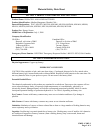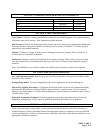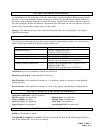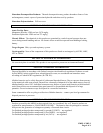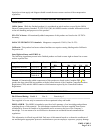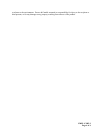
GMEL # 2002.9
Page 4 of 6
Hazardous Decomposition Products: Thermal decomposition may produce hazardous fumes of zinc
and manganese; caustic vapors of potassium hydroxide and other toxic by-products.
Hazardous Polymerization: Will not occur
SECTION 11: TOXICOLOGICAL INFORMATION
Acute Toxicity Data:
Manganese Dioxide: LD50 oral rat >3478 mg/kg
Potassium Hydroxide: LD50 oral rat 273 mg/kg
Chronic Effects: The chemicals in this product are contained in a sealed can and exposure does not
occur during normal handling and use. No chronic effects would be expected from handling a leaking
battery.
Target Organs: Skin, eyes and respiratory system.
Carcinogenicity: None of the components of this product are listed as carcinogens by ACGIH, IARC,
NTP or OSHA.
SECTION 12: ECOLOGICAL INFORMATION
No ecotoxicity data is available. This product is not expected to present an environmental hazard.
SECTION 13: DISPOSAL INFORMATION
Disposal should be in accordance with Federal, state/provincial and local regulations. Products covered
by this MSDS, in their original form, when disposed as waste, are considered non hazardous waste
according to Federal RCRA regulations (40 CFR 261).
Alkaline batteries can be safely disposed of with normal household waste. Due to concerns about mercury
in the municipal solid waste stream, Duracell has voluntarily eliminated all of the added mercury from its
alkaline batteries since 1993. Individual consumers may dispose of spent (used) batteries with household
trash. Duracell does not recommend that spent batteries be accumulated and disposed of in large
quantities. Do not incinerate except for disposal in a controlled incinerator.
Some communities offer recycling or collection of alkaline batteries – contact your local government for
disposal practices in your area.
SECTION 14: TRANSPORT INFORMATION
Products covered by this MSDS, in their original form, are considered “dry cell” batteries and are not
regulated for transportation as “DANGEROUS GOODS.” The batteries must be packaged in a manner
that prevents the generation of a dangerous quantity of heat and short circuits.
For finished packaged product transported by ground (US DOT): – not regulated
For finished packaged product transported by sea (IMDG) – not regulated
For finished packaged product transported by air (IATA): – not regulated



